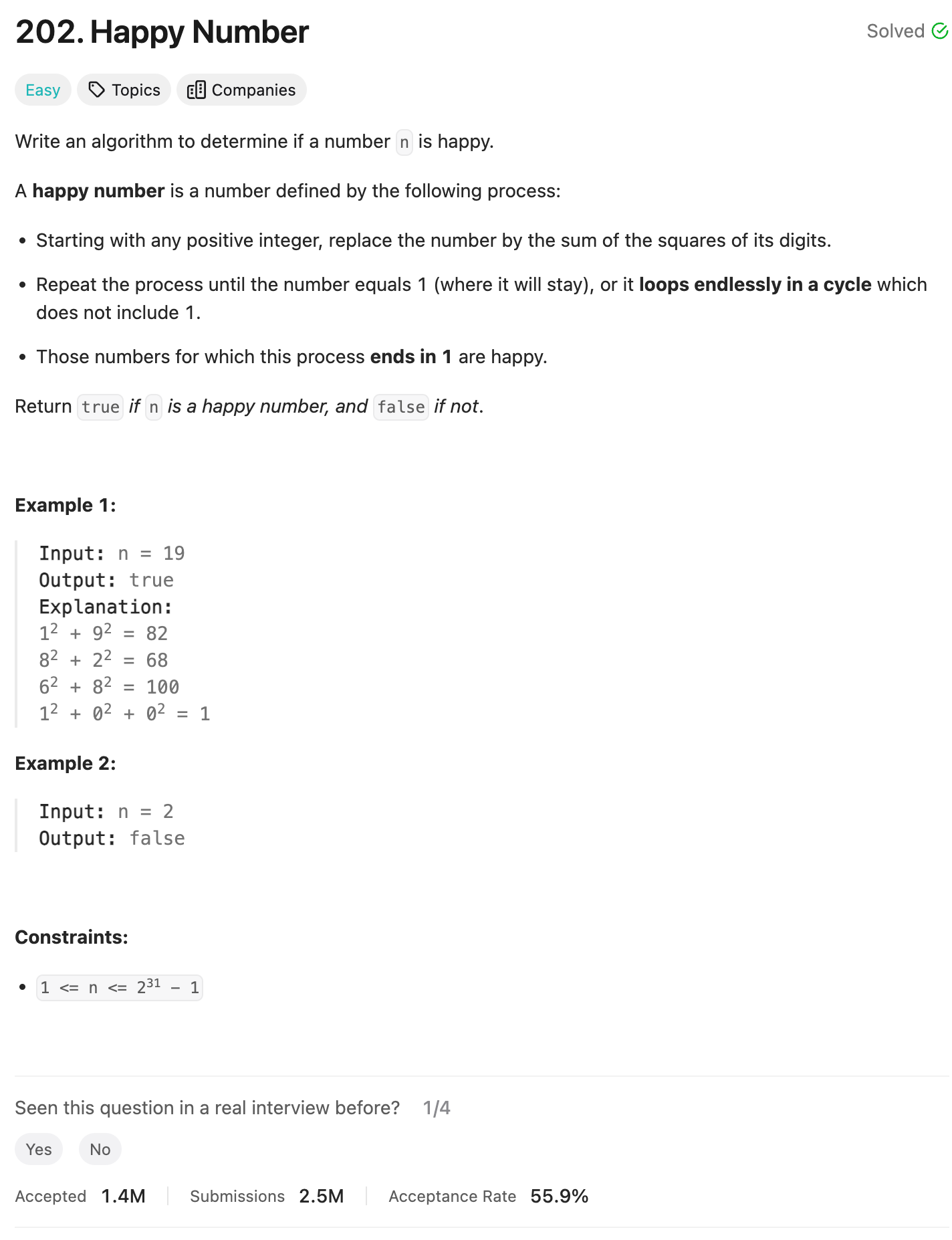Problem of The Day: Happy Number
Problem Statement
Intuition
My initial thoughts are to use a two-pointer approach, where one pointer (slow) moves one step at a time, and the other pointer (fast) moves two steps at a time. If there is a cycle, the fast pointer will eventually catch up with the slow pointer, indicating that the number is not a happy number.
Approach
I will define a helper function to calculate the sum of squares of digits for a given number. Then, I’ll initialize the slow and fast pointers with the result of applying the helper function to the input number and its double application, respectively.
I will iterate through the sequence until either of the pointers becomes 1 or they meet. If any of these conditions is met, I’ll return True, indicating that the number is a happy number. Otherwise, I’ll return False.
Complexity
-
Time complexity: O(log n) - The time complexity is determined by the number of digits in the input number.
-
Space complexity: O(1) - The space complexity is constant as we are using a fixed number of variables regardless of the input size.
Code
class Solution:
def isHappy(self, n: int) -> bool:
def helper(x):
res = 0
while x > 0:
res += (x % 10)**2
x = x // 10
return res
slow = helper(n)
fast = helper(helper(n))
# print(slow, fast)
while slow > 1 and fast > 1:
slow = helper(slow)
fast = helper(helper(fast))
if slow == fast:
return False
return True
